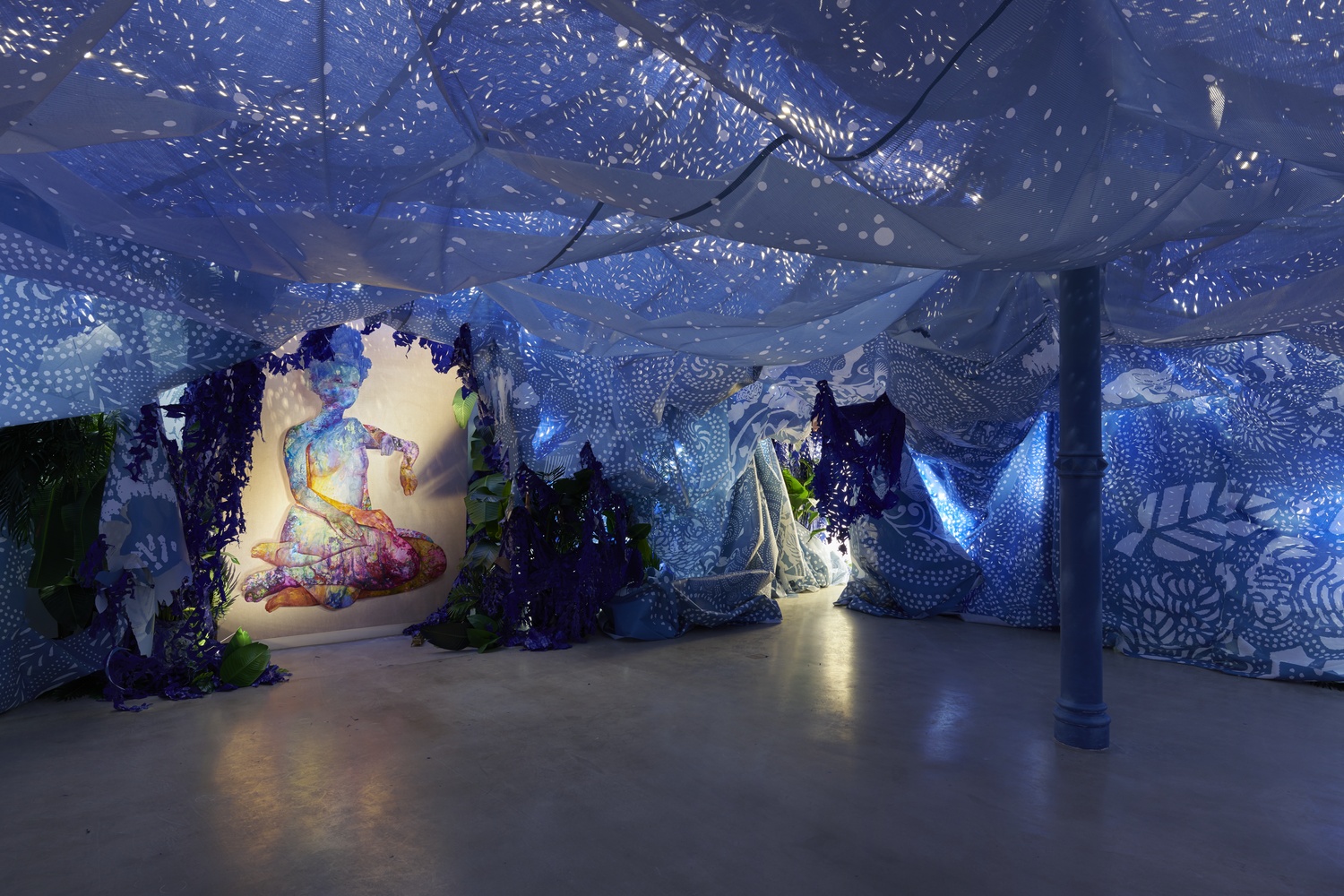
News
Summers Will Not Finish Semester of Teaching as Harvard Investigates Epstein Ties

News
Harvard College Students Report Favoring Divestment from Israel in HUA Survey

News
‘He Should Resign’: Harvard Undergrads Take Hard Line Against Summers Over Epstein Scandal

News
Harvard To Launch New Investigation Into Epstein’s Ties to Summers, Other University Affiliates

News
Harvard Students To Vote on Divestment From Israel in Inaugural HUA Election Survey
‘Firelei Báez’ Review: Explosive Color and Cutting Commentary

The first survey exhibition of Firelei Báez’s work in the U.S. is currently on display at the Institute of Contemporary Art, Boston from April 6 through Sept. 2. In a breathtaking explosion of color, historically grounded artworks explore the tense history of colonialism and diaspora. Organized chronologically, the exhibition does an outstanding job of offering insight into Báez’s rich, yet still young, career while never failing to deliver a captivating aesthetic experience.
From the moment viewers enter the galleries, they are immediately confronted with the might and grandeur of Báez’s vibrant and monumental style in her piece titled, “(once we have torn shit down, we will inevitably see more and see differently and feel a new sense of wanting and being and becoming).” With a title long enough to match the ambition of the work itself, the piece features a slanted panel constructed in the form of a wall. With a cut-out archway through which visitors can walk, the piece dominates the room with its impressive size and eye-catching colors. Báez’s capacity for subtle yet cutting symbolism is also put on display, as faded images that appear on the panel as wallpaper eventually reveal themselves to be recurring motifs of oppression and resistance.
In the next room, viewers are treated to a collection of some of Báez’s early power pieces — including “Can I Pass? Introducing the Paper Bag to the Fan Test for the Month of July,” a series of daily self-portraits from various angles. Rather than render her likeness in a life-like manner, Báez paints in broad strokes of light brown gouache that offer only a silhouette of her face — save for the richly detailed, piercing eyes that adorn each painting, each seeming to follow the viewer around the space. The work places itself in conversation with two problematic and prejudiced trends from history, such as the paper bag test — a racist practice wherein African-Americans faced discrimination based on whether or not their skin tone was lighter than the color of a brown paper bag. Even early in her career, Báez shows an astounding capacity to present artworks that are at once beautiful and biting.
Further in the galleries, Báez’s mastery over countless different mediums is displayed with the installation work, “Man Without a Country (aka anthropophagist wading in the Artibonite River).” As the viewer approaches, what at first appear to be a number of miniature paintings hanging a few inches in front of a wall reveal themselves to be pages torn from countless deaccessioned books. On top, Báez has painted wild, colorful forms that thematically interact with each other and with the text they cover.
The fullest extent of Báez’s multimedia talent is highlighted in the exhibition’s two installation rooms. Of particular note is “A Drexcyen chronocommons (To win the war you fought it sideways),” an ethereal space that is meant to evoke ocean waters deep below the waves — a goal it achieves to spectacular effect. Shredded cloth undulates above as golden lights shine from hidden corners, filling the space with a warm, Atlantean glow speckled with radiant dots that peak through holes in the textiles. Plants frame stunning paintings of matriarchal figures, referencing the story of “Drexciya,” an aquatic kingdom populated by the persevering children of pregnant women violently cast or forced overboard during the slave trade. Once again, Báez demonstrates her astonishing talent for breathtaking, striking aesthetic experiences that simultaneously probe historical tensions.
All of Báez’s art is defined by her incisive commentary and amazing use of color and form. Every work in the exhibition, regardless of scale, date, or content, is a vibrantly creative visual delight. Complete mastery of both innovative techniques as well as traditional modes of painting ensure that every work is fresh and memorable. Equally impressive is Báez’s immense historical knowledge — both social and artistic — that she continually wields to striking effect.
Though the curation often fades into the background in this show, it is precisely for this reason that it is so worth celebrating. White walls and bright yet unobtrusive lighting allow each work to stand out, not obscuring or distracting from any detail. The lighting is particularly effective, as it manages to illuminate each piece — even those made with oil paint — without smothering swathes of the composition in lurid glares. The inconspicuous approach to design is exactly what befits a striking young artist like Firelei Báez. Nothing in the room can draw attention away from the emerging master’s talent, commentary, and sheer presence in her art.
The ICA’s newly opened survey exhibition is an absolute must-see for any museumgoer of any background. Artists, historians, and even the entirely unfamiliar will find themselves enamored with Báez’s colors and compositions, wholly immersed thanks to the thoughtful curation of Eva Respini, the deputy director and director of curatorial programs at Vancouver Art Gallery and former chief curator at the ICA/Boston, with curatorial assistant Tessa Bachi Haas.
—Staff writer John M. Weaver can be reached at john.weaver@thecrimson.com.
Want to keep up with breaking news? Subscribe to our email newsletter.
